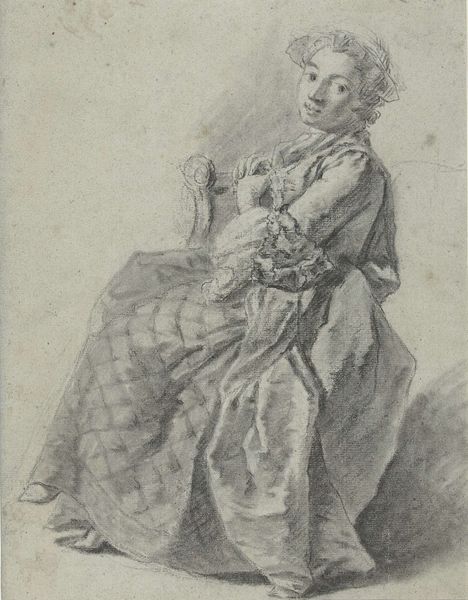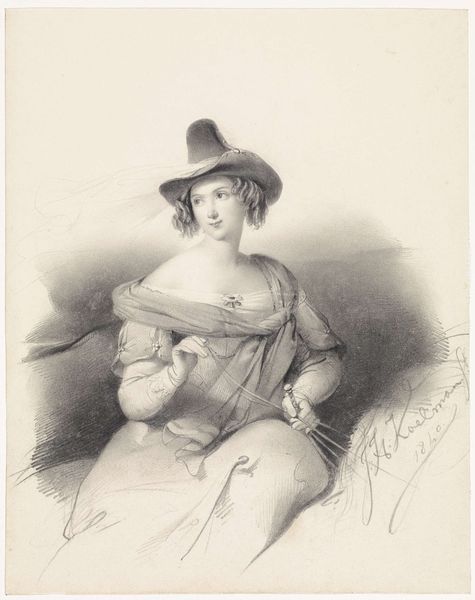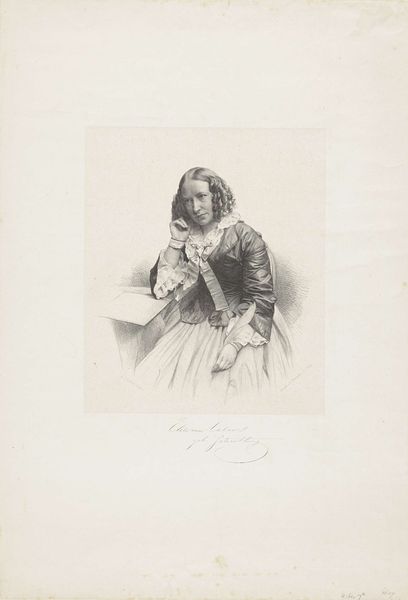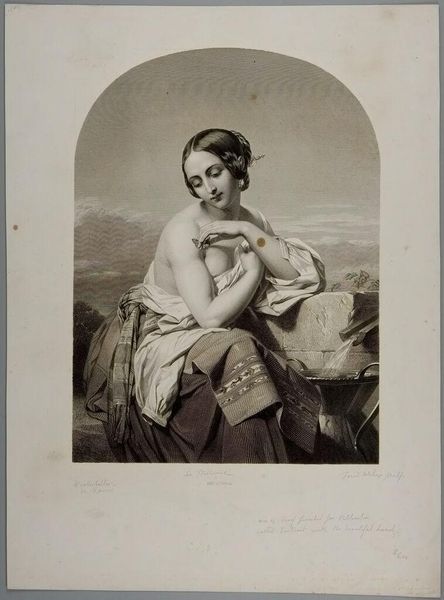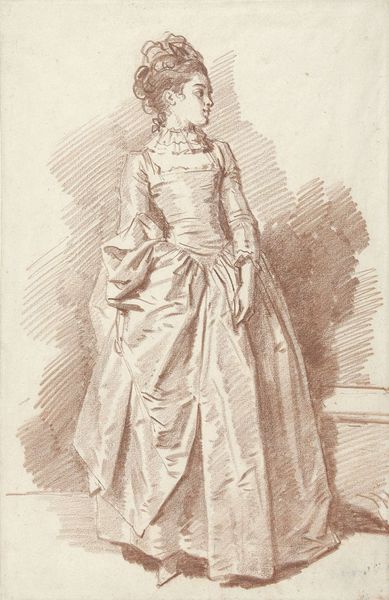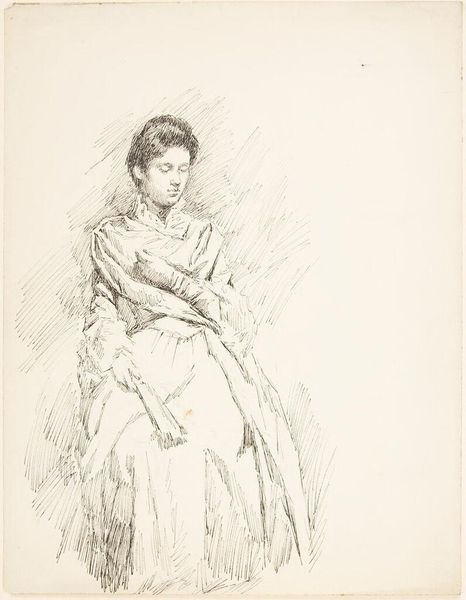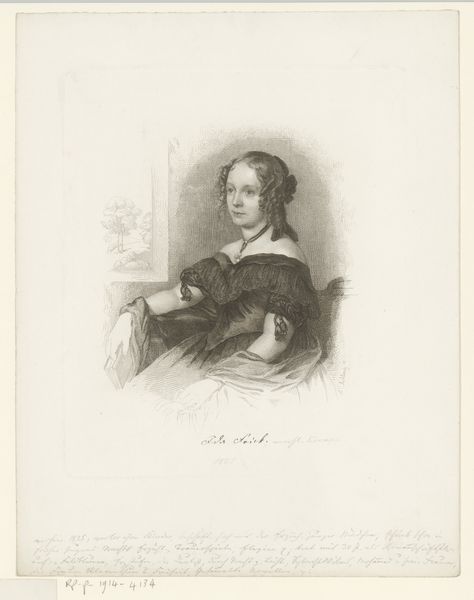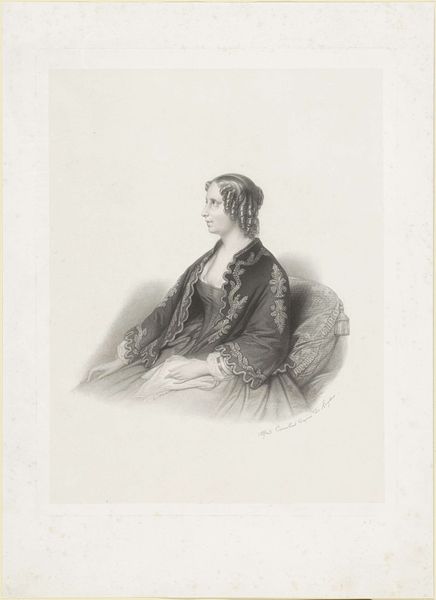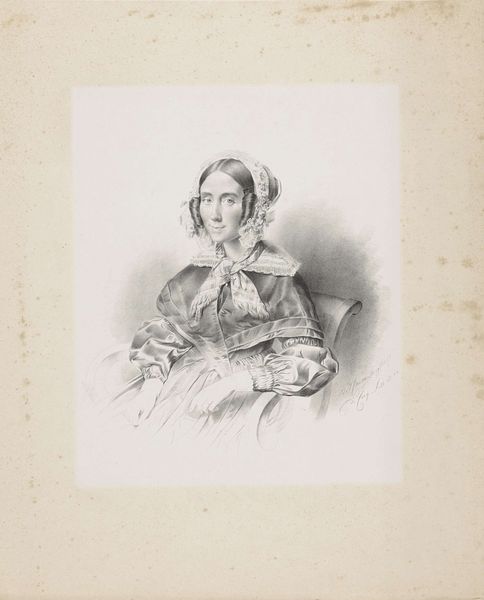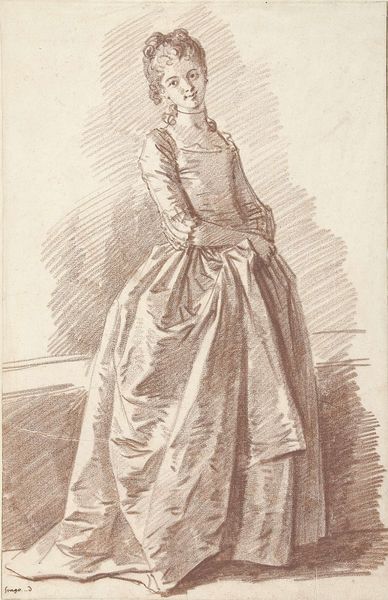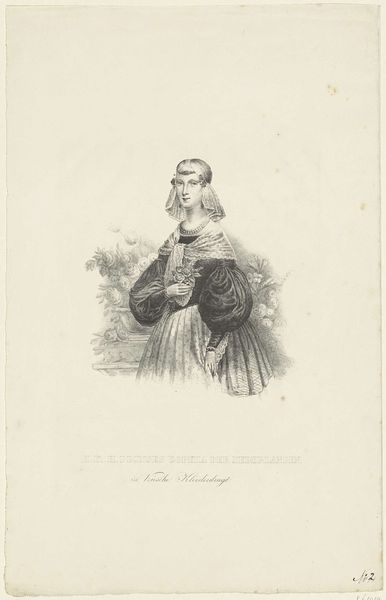
engraving
#
portrait
#
academic-art
#
engraving
Dimensions: height 126 mm, width 81 mm
Copyright: Rijks Museum: Open Domain
Editor: So, this is Jan Baptist Tetar van Elven’s "Portret van een jongedame," created in 1849 using engraving. It’s at the Rijksmuseum. The delicacy of the lines gives it such a gentle, almost melancholic feeling. What strikes you most about this portrait? Curator: I'm drawn to the rose she holds. Roses, of course, carry complex symbolism. In the Victorian era, particularly, floriography was in vogue. Editor: Floriography? Curator: The language of flowers. Roses commonly symbolized love, but depending on the color and stage of bloom, the meaning could shift. Given her contemplative pose, it could hint at a complex inner life. The young lady is resting, head in hand, a gesture pregnant with symbolism of thoughtful intelligence. Even the chair looks quite significant; is that a lion head on the top? Editor: It is, yes. Curator: A lion is emblematic of courage, of regality, but consider the overall impression: a young woman presented with intellectual prowess seated on a throne, a rose barely in her fingertips... Editor: Almost like she is a queen herself! The detail of the rose makes sense as more than an accessory. It communicates her virtues through its symbolic charge. I hadn't picked that up! Curator: And it might represent virtues expected of women at that time, particularly those from well-to-do families. Thinking more of that lion detail, she might also symbolize inner fortitude which the culture requires women to suppress. Editor: The rose and the lion really changed my understanding! Thank you. Curator: Of course. Cultural context enriches so many works, changing how we engage with the images and see the subjects within them.
Comments
No comments
Be the first to comment and join the conversation on the ultimate creative platform.
